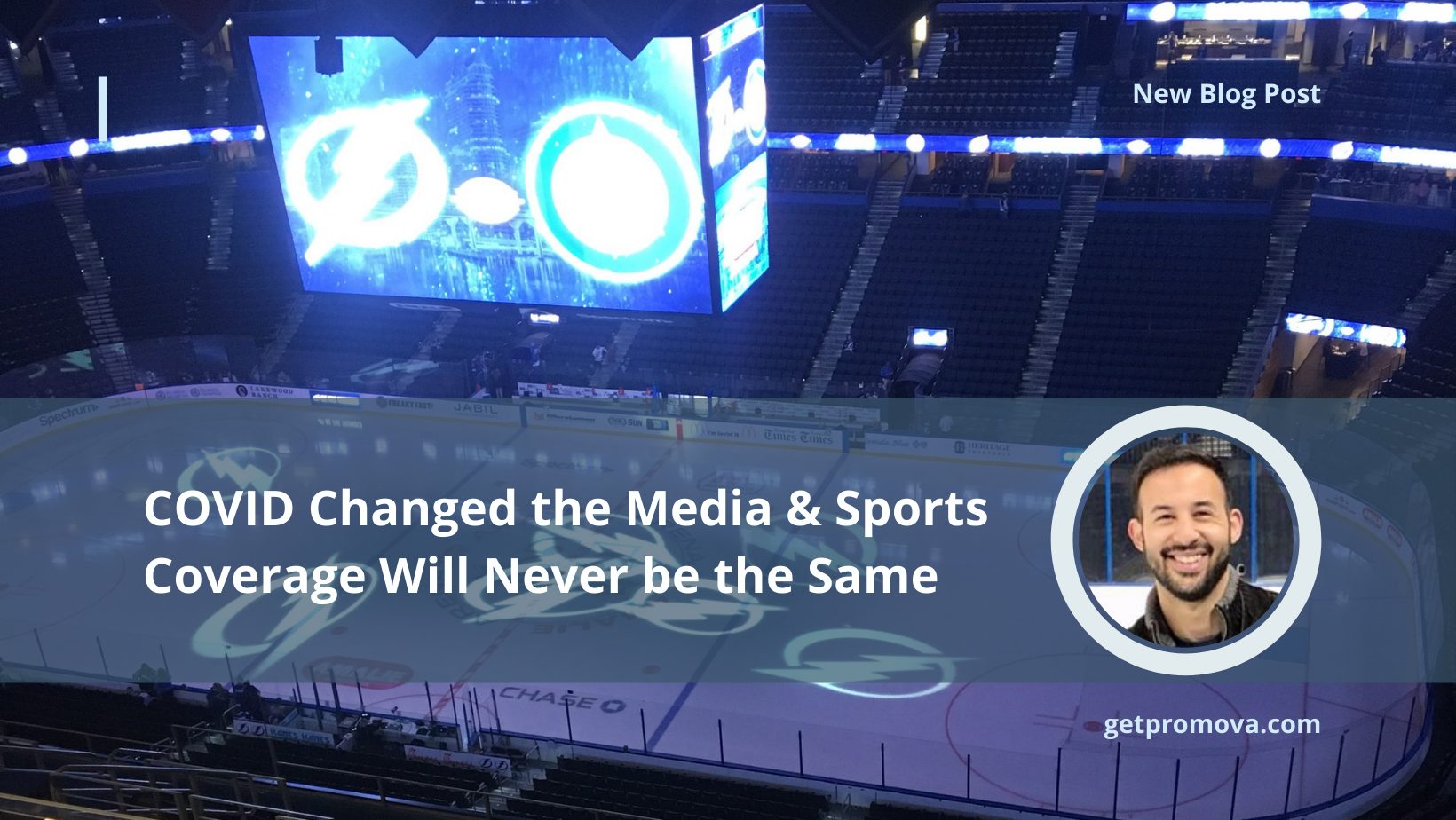
By Matthew Esteves
The COVID-19 pandemic forever altered the media landscape and especially sports coverage. The excitement around live game experiences attended in person now sees a virtual environment augmenting and becoming a more viable substitute. As a credentialed reporter covering the Tampa Bay Lightning for the past six years, I’ve seen two distinct dichotomies of their back-to-back championship runs and a clear shift by broadcasts, teams, and fans attempting to find a “new normal.”
Tampa Bay’s 2020 championship run saw at least four different nods to sports betting, from broadcasts to advertisements on the ice. The 2020 run was an entirely virtual experience, with streaming services coming to the forefront as viewers avoided overpriced paid platforms where entire communities spawned from the movement. This affected ratings, which were at record lows, forcing the NHL to look toward other avenues of revenue like actively encouraging fans to engage with sports betting websites. The global media landscape is evolving in the face of highly fragmented, 24/7 news consumption, shrinking newsrooms, and journalists relying more on PR practitioners for content. In fact, Cision’s most recent Global State of the Media Report noted that “with journalists covering several beats and stories per week, they’re looking for press releases (according to 78%) and original research (68%) along with graphics and invites to interview experts or attend events.”
There was euphoria among the Lightning fanbase when captain Steven Stamkos hoisted the 2020 Stanley Cup and yet a level of detachment when taking into account the circumstances of this championship–at least until the championship boat parade ensued. The 2020 NHL playoffs were set in a Canadian bubble, with Edmonton and Toronto being hubs for each conference before the final four teams converged in Alberta to determine the champion. Pre- and post-game interviews took place via zoom, no matter the circumstance. Going from in-person interviews where the interpretation of body language and tone assisted in storytelling to gauging it through a computer monitor was jarring.
The 2021 run saw a flip, a pseudo “return to normal” atmosphere with certain aspects of 2020 still hanging around that are still in place in 2022. Zoom interviews were reduced but were still the go-to if any suspected exposure to COVID happened; locker room access remained restricted. Instead, coaches and players would come to the conference room one by one for interviews—something that, before the pandemic, only happened during the post-season.
Fans were slowly allowed back into Amalie Arena throughout the season, and there was no stranger environment I’ve ever been in than the opening night of the 2021 season, where there was no one in the stands. Press members were allowed in on a strict basis of vaccination requirements, media reputation/coverage, and mask usage at all times unless eating or drinking. Eventually, as the season wore on, familiarity crept back into Amalie as 18,110, mostly unmasked, fans (95% capacity) attended the back-to-back championship-clinching Game 5 victory over the Montreal Canadiens.
The entire approach the team and league took with the media is something I feel will continue into a post-COVID world. Locker room access is still not permitted, and conference-style post-game interviews are the norm. Broadcasts increasingly augment more advanced information to improve the viewer experience, whether by using advanced tracking analytics of the on-ice product or betting lines, which creates an entirely new dynamic the sport has never experienced before.
The most significant shift I’ve noticed is how hard the team has leaned into their digital content compared to a pre-COVID world. The Lightning social media account is more engaging than ever, posts on a more frequent basis, and has dramatically improved the quality of its digital footprint. The conference-style post-game interviews provide a far more accessible and less crowded environment for their media team to edit and publish snippets to their audience and create more interest and traffic on social media and the team website. It’s a blatantly clear decision that has helped improve the team’s footprint in the Tampa Bay market, one that still sees the Tampa Bay Buccaneers dominate news coverage even though the Lightning is the most successful sports franchise the city has ever seen.
While the Lighting’s conscious changes to how they promote and distribute media are just one example, countless other exist in all industries. An already digital world has accelerated more rapidly in reaction to the pandemic, and valuable content is indeed king. Whether trying to gather more fans or more customers, it is exceedingly clear that those who remain active in the digital space, providing content and insights, will continue to be the ones turned to and thought of as leaders in their fields.
Matthew S. Esteves is a PR and Content Specialist at Promova, an international communication, PR, and branding agency. He is also a sports enthusiast and serves as a reporter for Tampa Bay Lightning.
